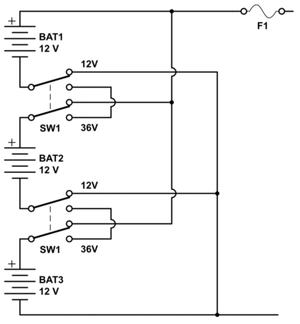In the not-too-distant future, your cell phone might become the key to your home. By transmitting a signal to a sensor, your phone will announce your arrival and the front door will unlock.
And that’s just the first step. Transmitters in the door will send signals elsewhere in your house, switching on the lights, turning up the heat, warming up the hot tub, queuing up your favorite MP3s on the home theater system, and telling your home computer to power on and download the latest e-mail.
Such fantasies have been a staple of the home automation market for years, of course. They’re already being tested in Japan, and they’re a bit closer to reality now in the United States, with an emerging home networking standard called ZigBee and some close competitors.
“We’re rapidly approaching a world where the most important devices in our lives are ones we don’t even realize exist,” says forecaster and strategist Paul Saffo, a director of the Institute for the Future, in Palo Alto, CA. Just as cheap microprocessors spawned the PC revolution of the 1980s and inexpensive lasers enabled the telecommunications and Internet revolution of the 1990s, Saffo argues that cheap sensors are ushering in a revolution in intelligent, interconnected devices, many of which will operate quietly in the background, without drawing any attention to themselves.
But before a swarm of sensors can turn into an intelligent network, though, they need a way to communicate with each other. Enter ZigBee. Based on an IEEE radio standard called 812.15.4, it allows digital transmissions of up to 1Mbps in one of two frequency ranges, 2.4GHz or 915MHz (in the Americas).
Overseeing what radio engineers call the upper “layers” of the ZigBee specification, the ZigBee Alliance governs such issues as how packets of electronic information are routed between ZigBee transmitters and receivers, and how these devices interface with various software programs. The alliance also certifies compatible devices and promotes the standard — in the same way that the Wi-Fi Alliance promotes, certifies, and helps develop the now-universal IEEE 802.11 set of wireless networking standards.
More than 150 member companies already belong to the ZigBee Alliance, including such electronics heavyweights as Honeywell, Motorola, Philips, and Samsung. Alliance chairman Bob Heile claims that ZigBee will enable any compatible device — regardless of the manufacturer — to communicate with any other ZigBee device, right out of the box. What’s more, the specification allows ZigBee devices to form mesh or cluster networks spontaneously, without any intervention from end users, installers, or (gulp) system administrators.
“When they’re being put together by people who don’t know beans about networking, these devices have to be intelligent enough that they organize themselves into a network and maintain the network if something breaks,” says Heile.
ZigBee doesn’t require high power consumption and makes it easy for devices to go in and out of a low-power sleep mode, so a ZigBee device should be able to run for years on an AA alkaline battery, Heile says.
That may not be an issue for appliances, such as lights, which are plugged into the power grid. But for battery-powered devices, such as remote controls and smoke detectors, power consumption is a key consideration, says Heile. This is a primary reason why existing wireless standards, such as Wi-Fi and Bluetooth, aren’t appropriate for home automation.
ZigBee’s success, however, is far from assured. Because the specification is just one year old, there are very few ZigBee devices currently available to consumers. One exception is a home entertainment and control system from Control4. Heile also points to a test network of 2,000 ZigBee nodes created by South Korea’s SK Telecom, which is investigating the possibility of including ZigBee radios in its cell phones.
Meanwhile, several competing home automation standards are also on the market or under development. A leading contender is Zensys’ proprietary Z-Wave standard, which has been out for several years. Z-Wave is a low-cost, somewhat less capable alternative to ZigBee — but more than 75 compatible products are already available for purchase, which may give Z-Wave a leg up.
Smarthome’s Insteon offers many of the same advantages as ZigBee, say analysts, but — also like ZigBee — it’s unproven in the market. Finally, there are communications systems that transmit information over home powerlines, such as X10. So far, these devices have very limited capabilities, although they have the advantage of tapping into a pre-existing infrastructure.
“We don’t expect ZigBee to have a major impact in this space for at least the next two to three years,” says George West, a senior analyst at West Technology Research Solutions LLC, in Mountain View, CA. That’s primarily because ZigBee devices cost more than alternatives like Z-Wave, and the standard is more complex than most home automation products currently require, says West. For this reason, ZigBee may ultimately be better suited for automation in commercial and industrial environments, such as hospitals, office buildings, and factory floors.
A few years from now, however, the story may be very different. Strategy Analytics predicts that the market for wireless mesh networking chips, including ZigBee, as well as Z-Wave and other proprietary solutions, will reach tens of millions of units annually by 2008.
On the other hand, the hurdles are not trivial: the market is relatively new, there are several competing standards, and there is no pressing consumer demand for home automation. “This stuff feels poised for takeoff — but three years from now, it may still feel poised for takeoff,” says Saffo.
One thing is clear: As more and more consumer products gain sensing capabilities and start interacting with the world around them, the value of networking them will grow. And ZigBee could be the way.
Dylan Tweney is a writer and editor in San Mateo, California.
Link: Esperanto for Toasters
Link broken? Try the Wayback Machine.

